Bodywork sanding block

Car body sanding block
-
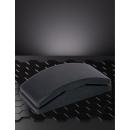 3802.0001Sanding block70 x 125mm - black
3802.0001Sanding block70 x 125mm - black -
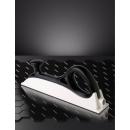 3806.041414-hole sanding block70 x 400mm - velcro
3806.041414-hole sanding block70 x 400mm - velcro -
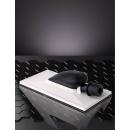 3807.011510-hole sanding blockWith extraction - 115x230mm
3807.011510-hole sanding blockWith extraction - 115x230mm -
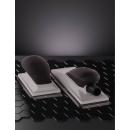 3808.0125Sanding block with dust extraction70 x 125mm - velcro
3808.0125Sanding block with dust extraction70 x 125mm - velcro -
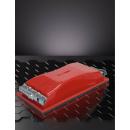 3815.2111Paper sanding blockwith ties 21 x 11 cm
3815.2111Paper sanding blockwith ties 21 x 11 cm -
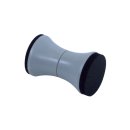 8301.0002Sanding blocks and shims
8301.0002Sanding blocks and shims
︾
Bodywork Sanding Blocks: technical presentation and description :
The Sanding Blocks is a very important work tool for a bodybuilder. It ensures efficient manual sanding. Its basic shape is simple: a rubber tool with a rounded back and a flat rectangular sole. The sanding paper is held in place by its ends. The Sanding Blocks are a support for the correct use of the sanding paper. The Sanding Blocks ensure even, high-quality sanding. For fast, practical sanding of car bodywork, Carross has all the sanding equipment you need in its online shop. Discover our Sanding Blocks and Sanding Wedges available in a wide range of models: with suction, with fasteners, etc. Thanks to Carross, you'll be able to sand in no time at a low price. Carross offers you these 4CR products for perfect sanding of your bodywork.
There are many different shapes of Sanding Blocks on the market. The shape and dimensions of the Sanding Blocks should be chosen according to the size and shape of the surface to be sanded. Carross also offers sanding blocks suitable for use with mini-discs. For example, our Carross Ø 35mm sanding block adheres perfectly to the MD32 Abrasive disc. What's more, it gives extremely fine sanding. This disc is perfect for getting rid of small dust particles, hairs and other unevenness on the surface of the bodywork. Your car body will be resplendent!
Sanding Blocks are essential tools in the car bodywork industry, used to obtain flat, smooth surfaces during the sanding process. Here are the impact spanners' key technical features:
Materials of construction :
Bodywork Sanding Blocks are generally made from lightweight but robust materials such as plastic, aluminium or composites. These materials allow for comfortable handling while ensuring the tool's durability.
Shape and design :
Sanding Blocks are often rectangular with straight edges. Some models may have a curved surface to adapt to specific bodywork contours. The ergonomic shape allows for comfortable and precise use.
Sanding surface :
The sanding surface of the Sanding Blocks is generally flat and even, ensuring even contact with the surface being sanded. Some models may have a perforated surface to help evacuate dust and residue.
Sanding paper fixing system :
Sanding Blocks are designed to securely fix the sanding paper. This can be done using Pliers, hooks and loops (Velcro type), or other fastening systems to ensure a stable grip.
Size and weight:
Sanding Blocks are available in a range of sizes to suit different surfaces and body shapes. They are generally lightweight, making them easy to handle over long periods.
Compatibility with different grits of sanding paper :
Sanding Blocks should be compatible with different grits of abrasive paper to suit different stages of the Sanding process, from coarse to fine.
Ergonomic handles or holders:
Some models of bodywork Sanding Blocks are equipped with ergonomic handles or supports to provide a comfortable grip and better control during sanding.
Wet or dry use:
Some Sanding Blocks are designed to be used with water, reducing dust during sanding and helping to achieve a smoother surface.
Flexibility:
The flexibility of the shim can vary depending on the material it is made from. Some models are designed to be more flexible, making them suitable for curved surfaces.
Durability:
Bodywork Sanding Blocks must be durable to withstand heavy use. The quality of manufacture and choice of materials play a crucial role in the tool's longevity.
In short, Sanding Blocks are tools specifically designed to provide precision, comfort and efficiency when sanding in the automotive bodywork industry. Selecting the right shim for the specific needs of the project will help to achieve high-quality sanding results.
What are the advantages of Sanding Blocks in the automotive workshop?
1. Regular, even sanding:
The Sanding Blocks distribute the pressure evenly over the abrasive. The surface is perfectly flat, with no indentations or bumps, which is essential before applying primer, paint or Clearcoat. Without a shim, freehand sanding often leaves visible irregularities after finishing.
2. Better control of the work :
Thanks to its rigidity or flexibility (depending on the model), the Sanding Blocks offer precise control over the sanded area. Rigid shims guarantee impeccable straightness on flat surfaces (doors, bonnets, roofs). Flexible shims follow the curves (wings, bumpers), avoiding jolts and surface defects.
3. Optimum preparation for Paint :
Regular sanding with a shim ensures :
- Better adhesion of Primer and Paint
- Reduced risk of defects (orange peel, micro-scratches, hollows visible after varnishing).
- This increases the quality of the final finish and reduces the need for Touch up, saving time and money for the bodyshop.
4. Versatility to suit your needs :
Shims are available in several formats and materials:
- Long shims: for checking flatness over large auto areas
- Small or ergonomic shims: perfect for localised touch-ups
- Vacuum shims: reduce dust and maintain a healthier working environment
- Each type of shim corresponds to a different stage in the bodywork process
5. Comfort and efficiency for the bodybuilder :
Working with a wedge reduces fatigue :
- Better grip
- More regular movements
- Faster, less physical sanding
- Result: greater productivity and less unnecessary effort
6. Durability and economy :
- The shim protects the abrasive from regular wear: the paper lasts longer
- Less time wasted changing paper
- Less costly rework after paint application
- All in all, a small investment that brings real profitability to the workshop.
7 - Enhanced professional quality :
A workshop that uses the right tools (including Sanding Blocks) guarantees high-level finishes. This will :
- Increases customer satisfaction
- Reduces returns
- Improves the image of seriousness and professionalism
In the bodywork workshop, Sanding Blocks are much more than just accessories: they are precision tools that guarantee the quality and profitability of the work. It provides an even surface, improves the adhesion of paint products and reduces the risk of defects. Comfortable, time-saving and with a top-of-the-range finish, it is an indispensable ally for professional body repairers.
How do I maintain Sanding Blocks to extend their life?
Sanding Blocks are essential tools for precise, even sanding. Good maintenance guarantees their effectiveness and avoids damaging the abrasives or the auto work surfaces.
1. Regular cleaning after each use:
- Remove sanding dust: use a soft brush or dry cloth to remove sanding paper residue and body dust.
- Vacuum if possible: for vacuum chocks, empty the collector or clean the suction system to avoid blockages.
- Avoid water: unless the shim is designed for wet sanding, moisture can damage wood or plastic.
2. Checking the surface of the block :
- Inspect the flat regularly: check that the surface of the shim is flat and free of bumps. A warped or damaged shim requires regular sanding.
- Lightly sand the surface: for wooden shims, light sanding or cleaning with fine paper can remove stuck-on residues and restore flatness.
3. Protecting edges and corners :
- Corners wear out more quickly and can damage the bodywork if damaged.
- Limit bumps and falls
- If necessary, fit a small edge protector if the plastic or wooden wedge is used a lot.
4. Change abrasives correctly:
- Never force the abrasive paper onto the shim; it must be firmly attached.
- Remove worn abrasives and replace them as soon as sanding becomes less effective.
- Use compatible abrasives to avoid damaging the shim (self-gripping for Velcro, standard paper for conventional shims).
5. Proper storage :
- Store shims in a dry place away from heat to avoid warping.
- Avoid stacking them under other heavy tools
- For flexible shims, store flat to maintain their shape.
6. Vacuum system maintenance (if applicable) :
- Regularly check that the suction holes are not blocked
- Clean the filtration system if present, to maintain power and reduce dust in the workshop.
7. Good habits to prolong the life of your chock:
- Alternate use on different surfaces to avoid localised wear
- Never use the wedge on surfaces containing thick dry paint or metal residues
- Clean immediately after use to prevent dust and paint sticking to the surface.
When should a Sanding Blocks be replaced?
In car bodywork, the Sanding Blocks is a tool that can last a long time if properly maintained, but there are signs that indicate it's time to replace it:
1. Loss of flatness:
- If the surface of the block is not flat (bump, indentation, warp), the sanding becomes uneven.
- Result: visible defects after painting (indentations, waves, poorly blended joints).
- In this case, the shim must be replaced, as correction is often no longer possible.
2. Damage to the substrate :
- On foam or rubber shims, the material may wear, crack or collapse.
- On wood or Plastic shims, the edges may be damaged or flake off, leading to undesirable marks on the bodywork.
3. Fixing the defective abrasive :
- If the velcro/self-gripping system no longer holds the abrasive correctly.
- If the mechanical fasteners (on certain shims) are broken or worn.
- This makes it difficult to use and increases the risk of damaging the surface.
4. The wedge is irreversibly dirty:
- If, despite cleaning, the surface remains saturated with dust, scale residues or dried Primer.
- A dirty shim prevents the abrasive paper from adhering properly and distorts sanding.
5. Wear due to intensity of use:
- In a body shop, a shim used every day can lose its effectiveness in a few months.
- For more occasional use, it can last for several years.
- The rule: if the quality of the Sanding decreases despite a new abrasive, it's time to change the shim.
6. Appearance of defects on the Sanding :
- Abnormal scratches, edge marks, regular sanding: often a sign that the shim is no longer suitable.
- This can cost more in trade-ins than the price of a new shim.
A Sanding Blocks should therefore be replaced when :
- It is no longer flat
- Its backing has deteriorated
- The Velcro or fastening system is worn
- It remains dirty
- Or when it produces visible defects despite using a new abrasive.
In a bodywork workshop, it's better to replace a shim a little earlier than to have to redo a complete finish because of a sanding fault.
Sanding bodywork with Sanding Blocks:
Sanding car bodywork is a crucial step in the repair or Preparation process prior to Paint. Using a Sanding Blocks is often essential to ensure a smooth, even finish. Here are some typical Sanding Blocks essential steps:
Stripping old paint :
Where it is necessary to remove existing paint, the Sanding Blocks are used with coarse abrasive paper to effectively remove previous paint, coatings or primers.
Repairing damaged areas:
After carrying out bodywork repairs, such as correcting dents, the Sanding Blocks are used to smooth the repaired area. This ensures a smooth transition between the repaired surface and the rest of the bodywork.
Surface preparation :
Before applying a primer or a new coat of paint, Sanding is essential to prepare surfaces. Sanding Blocks are used to create a uniform surface, remove imperfections and ensure optimum adhesion of the new coating.
Levelling surfaces:
To even out differences in level between different parts of the bodywork, the Sanding Blocks are used with appropriate grains of abrasive paper to obtain a uniform and harmonious surface.
Sanding between coats of paint :
Sanding between coats of Paint is often necessary to remove any imperfections, drips or spray marks. The Sanding Blocks facilitate this process while preserving the uniformity of the surface.
Preparation before finishing:
Before applying the Topcoat, sanding is carried out to remove any remaining irregularities and ensure a perfectly smooth surface. The Sanding Blocks are used with fine-grain sandpaper to achieve a high-quality finish.
Working on contours and curves:
The shape and design of the Sanding Blocks make them ideal for working on bodywork contours and curves. It allows you to reach hard-to-reach areas while maintaining uniform pressure.
Finishing:
Before applying the final Clearcoat, a final Sanding is carried out to remove the last imperfections and obtain a perfectly smooth surface. The Sanding Blocks play a crucial role in this delicate phase.
The judicious use of a Sanding Blocks throughout these stages helps to guarantee a professional result, ensuring that the bodywork surface is perfectly prepared for the next stages in the repair and finishing process.
The different types of Sanding Blocks :
1. Traditional manual shim :
The manual version is easy to use and enables both large areas and complex profiles to be sanded with precision. Its relevance lies in its versatility: it can hold a cut abrasive sheet or a roll of abrasive.
2. Multi-profile shims :
Some shims are multi-profile because they adapt to different profiles: flat, curved, rounded. They are ideal for working on delicate areas such as wings or bumpers.
3. Double-face shim :
The double-face shim allows you to use two different grit sizes on the same tool: one side for roughing, the other for finishing. This type of shim is particularly useful when preparing for Polishing and before applying matt or gloss Clearcoat.
4. Wedge with air extraction :
In workshops equipped with a paint booth, dust must be perfectly controlled. Wedges with filter and air extraction connect to a vacuum system to maintain a clean environment and protect the quality of the final colour.
Additional accessories for efficient sanding:
- Abrasive sponge: ideal for rounded surfaces and hard-to-reach areas
- Shim kit: several models (multi, flexible, rigid) to suit all jobs
- Grip sanding sheet: easy to attach, saves time when ordering and fitting
- Sanding paper roll: handy for cutting to length
- Air gun: used to blow away dust and clean the shim between uses
Sale and relevance of professional Sanding Blocks :
Sanding Blocks are available in kit, manual or double vacuum versions. Their relevance lies in their essential role in polishing, preparing a putty, evening out a colour or guaranteeing an impeccable matt finish.
Specialist retailers offer several types of shim:
- classic
- ergonomic
- vacuum with filter
- or black non-slip models for greater working comfort.
Whether you're working on a minor Touch up or preparing a complete bodywork, manual Sanding Blocks are an essential tool. By combining the right sanding sheet, a shim adapted to the profile and an in-cab filter and air extraction system, the bodybuilder obtains perfect preparation for the final paint and Polishing operations.
Discover our article dedicated to Sanding Blocks and access all the information you need to choose the right model for your professional needs.
FAQ: everything you need to know about using Sanding Blocks :
The use of Sanding Blocks in car bodywork often raises questions among users looking to optimise their sanding technique. Here are some answers to the most frequently asked questions about the use of Sanding Blocks:
1. When is it necessary to use Sanding Blocks rather than other sanding methods?
Sanding Blocks are particularly effective for obtaining flat, uniform surfaces. They are recommended when precision and evenness are crucial, such as when smoothing large surfaces or working on delicate contours.
2. How do I choose the right Sanding Blocks for a specific project?
Select a Sanding Blocks according to the shape of the surface you are working on. For flat areas, a rectangular shim is often appropriate, while curved shims are ideal for contours and curves. Also consider the flexibility of the shim according to the needs of the project.
3. What is the best method for attaching the sanding paper to the Sanding Blocks?
Most Sanding Blocks use a Pliers or hook and loop (Velcro) fastening system. Make sure the sanding paper is properly secured to prevent movement during sanding.
4. How can I avoid unwanted marks and scratches when sanding with a sanding block?
Use regular movements and avoid staying in one place for too long. Apply even pressure to the spacer to avoid uneven marks.
5. Are Sanding Blocks suitable for curved bodywork surfaces?
Yes, some Sanding Blocks are specially designed to adapt to the contours and curves of the bodywork. Choose a shim that is flexible and adapted to the shape of the surface.
6. How often should I change the sanding paper on the block?
Change the abrasive paper as soon as it shows signs of wear. Fresh abrasive paper ensures optimum performance and prevents damage to the surface.
7. Can I use a Sanding Blocks on Plastic or Fiberglass surfaces?
Yes, some Sanding Blocks are suitable for use on Plastic or Fiberglass surfaces. Choose a model with the appropriate flexibility to avoid damaging these delicate materials.
8. How do I clean and maintain a Sanding Blocks to extend its life?
Clean the block regularly to remove sanding residue. You should also check that the block is in good condition, with no deformations or cracks, to ensure that it can be used for a long time.
By understanding these answers to frequently asked questions, users can make effective use of Sanding Blocks to achieve professional results on their car bodywork projects. Careful shim selection and the application of appropriate sanding techniques are essential for a successful job.
Carross at your side to choose the best abrasive
Do you still have questions after our in-depth descriptions of the different abrasives and Sanding Blocks? Don't worry! We also have a main page listing all the abrasives offered by Carross. There you'll find details of many other abrasives, other than Sanding Blocks. Our only ultimate goal is to help you see the most beautiful car paint possible! And because helping you is one of our priorities, you should know that we also have a responsive sales department ready to answer all your questions on 01 60 27 20 19. We also have a page where you can write to us directly online. We'll answer all your questions, whether they concern an Abrasive disc, a Sanding Blocks or a car paint reference! Don't hesitate to take advantage of our fast delivery service if the product you buy is in stock directly on our site!
Using a bodywork Abrasive discs :
Like many bodywork tools, using specialist equipment can sometimes be dangerous! So make sure you get all the information you need before you start using your equipment. Carross has your wellbeing at heart and also offers equipment to protect you from any incident, from cuts to the fingers to splashes of car paint in the eyes, for example. All in all, your car or motorbike paint will be given a new lease of life with Carross!